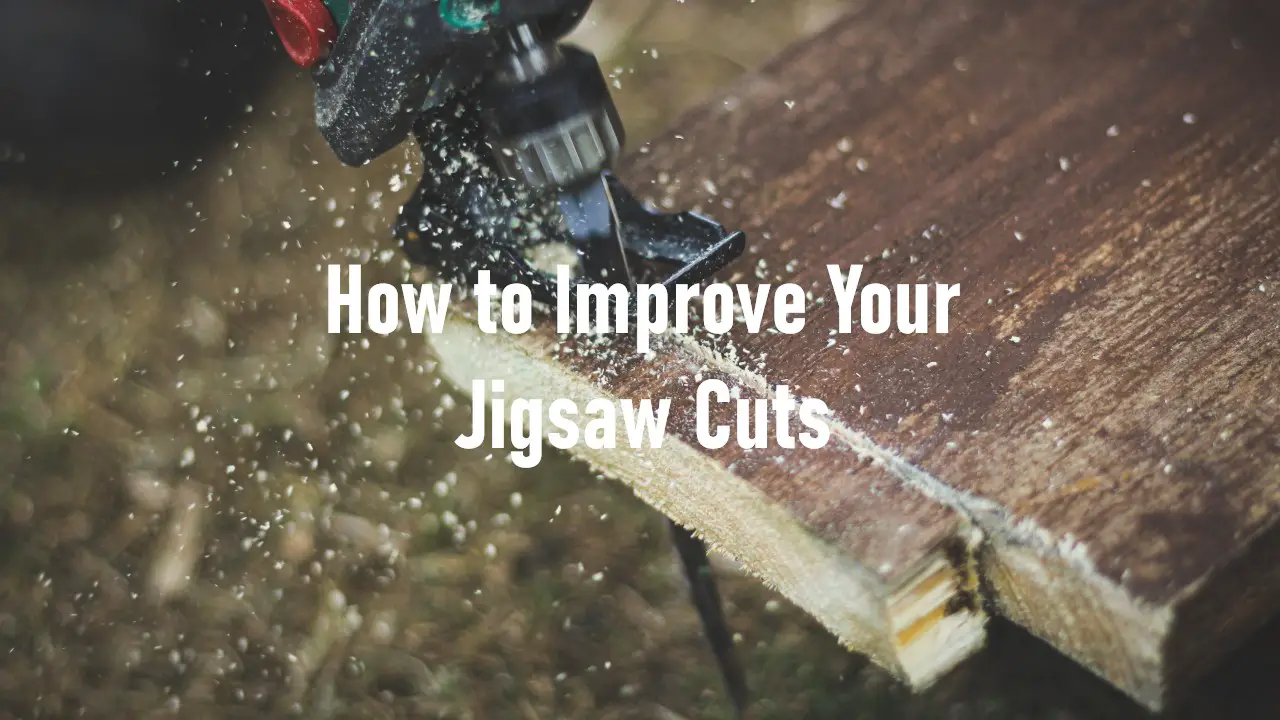Improving your jigsaw cuts is essential to achieving a professional-looking finish on your woodworking projects. Whether you’re cutting curves or straight lines, a jigsaw can be a versatile tool for getting the job done. However, if you’re struggling to make accurate cuts, there are a few tips and tricks that can help.
Firstly, it’s important to choose the right blade for the job. A fine-toothed blade will give you a smoother cut, while a coarse blade will cut faster but leave a rougher finish. Additionally, you can improve your jigsaw cuts by using painter’s tape as a guide rather than hard-to-see pencil lines. Painter’s tape is especially helpful when cutting dark wood because it is visibly clearer to see. Simply cut out your curved guide on the painter’s tape with a hobby knife and place it on the wood.
Another way to improve your jigsaw cuts is to ensure that your saw is properly set up. This includes checking the blade tension and making sure the blade is perpendicular to the base plate. Additionally, be sure to hold the saw firmly and move it slowly and steadily through the wood. By following these tips and techniques, you can improve your jigsaw cuts and achieve a more professional-looking finish on your woodworking projects.
Page Contents
Understanding Jigsaw Basics
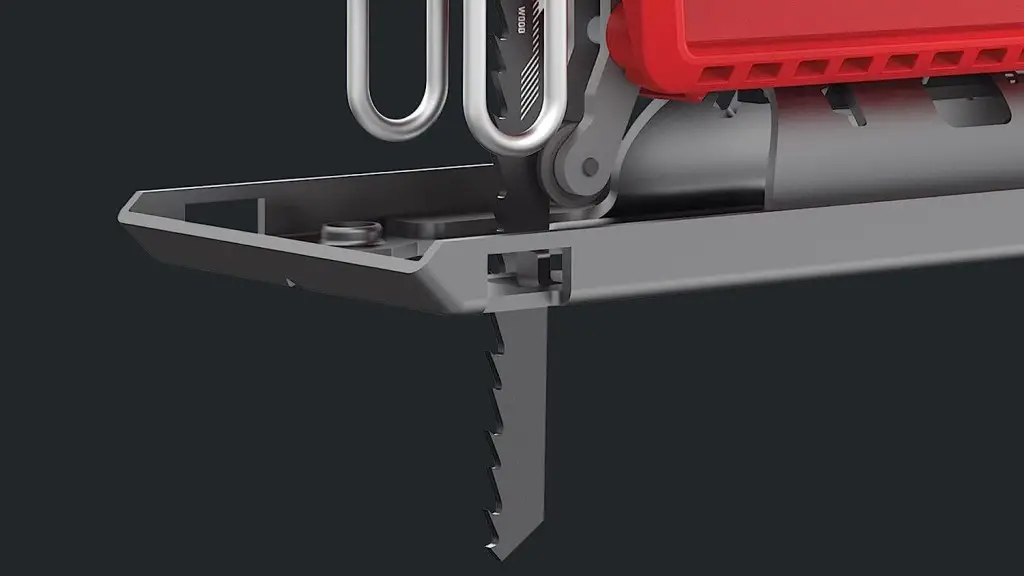
A jigsaw is a versatile power tool that can be used to make a variety of cuts in different materials such as wood, metal, and plastic. It is a handheld tool that is easy to use and can be used to make straight, curved, and angled cuts.
The jigsaw blade is the most important part of the tool, and it comes in different types and sizes. The blade type and size will depend on the material being cut and the type of cut being made. For example, blades with more teeth per inch (TPI) are ideal for making finer cuts in wood, while blades with fewer TPI are better for making rough cuts in thicker materials like metal.
The jigsaw blade is attached to the base of the tool, which is also known as the shoe. The shoe is the flat metal plate that rests on the material being cut and provides stability to the tool. The shoe can be adjusted to different angles to make angled cuts.
The jigsaw motor is what powers the tool, and it determines the cutting power of the tool. The higher the motor power, the more cutting power the tool will have. A jigsaw with a powerful motor is ideal for cutting through thick materials.
To make straight cuts with a jigsaw, it is important to use a guide. A guide can be a straight piece of wood or a metal rail that is clamped to the material being cut. The guide helps to keep the tool on track and ensures that the cut is straight.
When making curved cuts with a jigsaw, it is important to use a blade with a small TPI and to use a slow and steady stroke. The blade should be guided along the curve, and the tool should be moved in a smooth and steady motion.
Overall, understanding the basics of a jigsaw is important for making accurate and clean cuts. By selecting the right blade, using a guide, and making the right adjustments to the tool, anyone can achieve professional-looking results with a jigsaw.
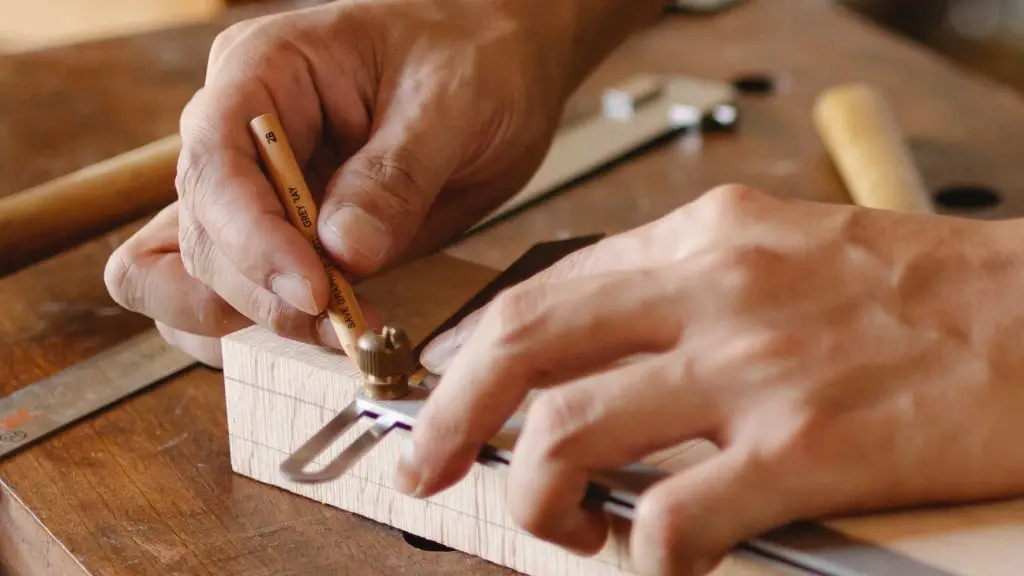
Preparation Before Cutting
Before making any cuts with a jigsaw, proper preparation is essential. This section will cover the necessary steps to take before starting your jigsaw cuts.
Marking the Workpiece
To ensure accuracy, it’s essential to mark the workpiece before cutting. Use a pencil to mark the cut line on the workpiece. For curved cuts, use an arc to draw the line.
Securing the Workpiece
Securing the workpiece is crucial to prevent it from moving during the cutting process. Use clamps to secure the workpiece to the work surface. Make sure the clamps are perpendicular to the cut line to prevent the workpiece from shifting.
Choosing the Right Blade
Choosing the right blade for the job is essential for accurate and clean cuts. For cutting wood, use a blade with a beveled edge and a low TPI count. For cutting steel, use a carbide-grit abrasive blade. For cutting plastics, use a blade with a high TPI count.
Setting Up the Jigsaw
Before starting the cutting process, ensure that the jigsaw is set up correctly. Adjust the blade guide to ensure the blade is perpendicular to the workpiece. Adjust the orbital setting to control the blade’s upstroke and prevent tear-out. Tighten any loose screws and ensure the base plate is level.
Overall, proper preparation is essential for accurate and clean jigsaw cuts. By marking the workpiece, securing it to the work surface, choosing the right blade, and setting up the jigsaw correctly, diyers can achieve the desired results without injury or damage to the workpiece. Remember to wear goggles and a dust mask to protect your eyes and health from dust and chips.
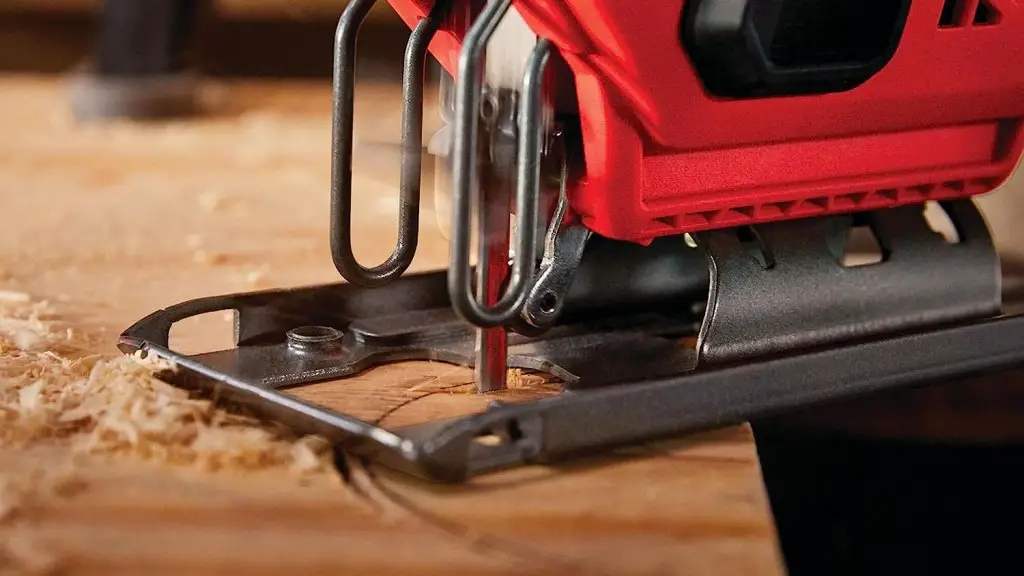
Making the Cut
When it comes to jigsaw cuts, there are a few different techniques to keep in mind depending on the type of cut you need to make. Whether you’re working with wood, metal, or other materials, here are some tips to help you achieve clean and precise cuts with your jigsaw.
Straight Cuts
For straight cuts, it’s important to use a guide to ensure that your blade stays on track. You can use a straight edge or a piece of scrap wood as a guide, or invest in a specialized jigsaw guide. When making a straight cut, be sure to keep the base of the jigsaw flat against the material and maintain a steady speed and angle throughout the cut.
Curved Cuts
When cutting curves, it’s important to choose the right blade for the job. Blades with more teeth per inch (TPI) are better suited for making smooth, gradual curves, while blades with fewer TPI are better for tighter curves. You can also use a guide to help you cut more accurately, such as a piece of wood or a specialized jigsaw guide. When making a curved cut, be sure to maintain a steady speed and angle throughout the cut, and avoid twisting or turning the blade.
Beveled Cuts
To make a beveled cut, adjust the angle of the jigsaw base to the desired angle and use a guide to help you maintain a straight line. Be sure to choose the right blade for the job, as blades with more teeth per inch are better suited for making smooth, gradual bevels, while blades with fewer TPI are better for steeper bevels.
Plunge Cuts
Plunge cuts are used to create openings in the middle of a piece of material, such as for sink cutouts or electrical outlets. To make a plunge cut, first drill a pilot hole in the material, then insert the jigsaw blade into the hole and begin cutting. Be sure to use a blade with sharp teeth and a guide to help you maintain a straight line.
Overall, when making jigsaw cuts, it’s important to choose the right blade for the job, use a guide to help you maintain accuracy, and maintain a steady speed and angle throughout the cut. With practice and patience, you can achieve clean and precise cuts with your jigsaw.
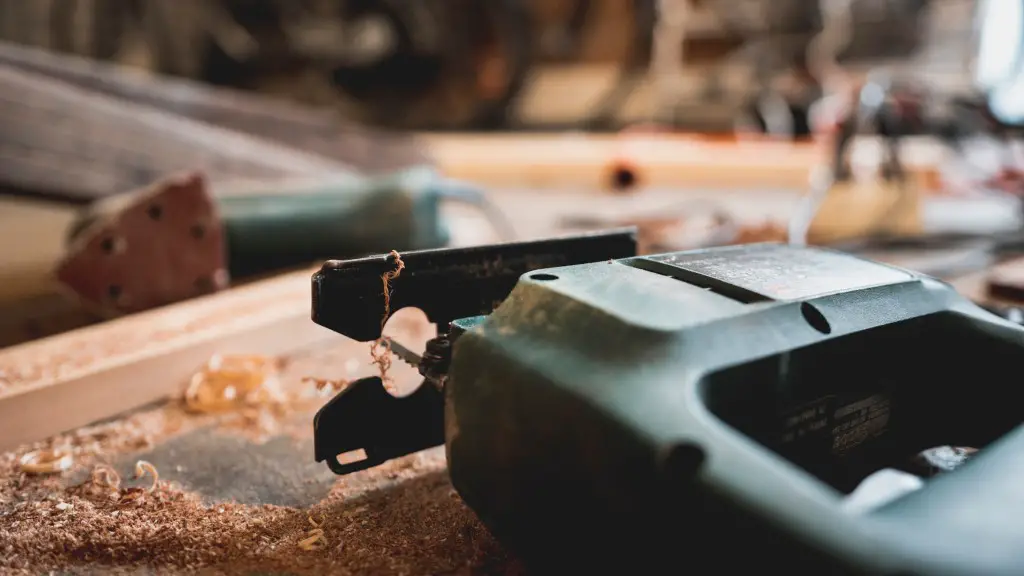
Advanced Techniques
Cutting Different Materials
When it comes to cutting different materials with a jigsaw, it’s important to choose the right blade for the job. For cutting wood, a blade with 6-10 teeth per inch (tpi) is best for straight cuts, while a blade with 10-20 tpi is better for curved cuts. For cutting metals, use a blade with a higher tpi and a tooth design that is specific to the type of metal being cut.
When cutting plastics or ceramics, use a carbide-grit abrasive blade. When cutting sheet goods like plywood or veneers, use a blade with a high tooth count and set the orbital setting to low to prevent chipping and splintering.
Avoiding Common Mistakes
One of the most common mistakes when using a jigsaw is blade deflection, which can cause inaccurate cuts. To avoid this, make sure the blade is properly tightened and the screws are adjusted to hold it in place. Another mistake is using too much pressure, which can cause the blade to bend and produce an inaccurate cut. Use a light touch and let the blade do the work.
To prevent tear-out and chips, make relief cuts before making tight curves. Use a guide to keep the blade perpendicular to the work surface and avoid beveling the cut. Wear goggles to protect your eyes from flying debris and dust.
Maintaining Your Jigsaw
To keep your jigsaw in good condition, clean it regularly and check the base plate for accuracy. Make sure the blade is properly aligned with the base plate and that the saw fence is properly adjusted. Use a workpiece clamp to hold the material in place and reduce vibration.
To prevent burning, use a blade with the right tooth count and speed for the material being cut. Use a starter hole for plunge cuts and use masking tape as a guide for dark wood to improve visibility. Regularly check the motor and brushes for wear and replace them as needed.
By following these advanced techniques, anyone can achieve accurate and clean jigsaw cuts on a variety of materials.
Conclusion
In conclusion, improving jigsaw cuts is a matter of technique, preparation, and practice. By choosing the right blade, adjusting the speed and orbit settings, and properly clamping the material, one can achieve accurate and clean cuts. Moreover, using guiding techniques, such as painter’s tape or a straight edge, can help create curved or angled cuts with precision.
It is important to note that the material being cut can affect the quality of the cut. For example, dense hardwoods require a slower blade speed to avoid burning, while softwoods and sheet goods can be cut at a higher speed. Additionally, protecting the work surface with masking tape can reduce marring caused by the downward force and vibration of the saw.
When using a jigsaw, it is crucial to maintain proper technique, including keeping the blade perpendicular to the material and avoiding twisting or forcing the saw. One should also be aware of the stroke length and motor power of the saw, as these factors can affect the speed and control of the cut.
Overall, with the right tools, techniques, and preparation, anyone can improve their jigsaw cuts. Whether cutting wood, metal, or other materials, following these tips and practicing regularly can lead to cleaner and more accurate cuts.
Frequently Asked Questions
How do you make good cuts with a jigsaw?
To make good cuts with a jigsaw, it is important to choose the right blade for the job. The blade should match the material you are cutting, and it should be sharp and in good condition. Additionally, it is important to use the right cutting technique. When cutting curves, for example, it is important to keep the blade moving smoothly and steadily, without forcing it.
Another important factor is the speed of the blade. For most cuts, a high speed is ideal, but for dense hardwoods, it may be necessary to slow down the blade to avoid burning. Finally, it is important to hold the jigsaw firmly and keep it steady as you cut, to avoid wobbling or drifting.
Why doesn’t my jigsaw cut straight?
If your jigsaw is not cutting straight, there could be several reasons why. One common reason is that the blade is not aligned properly. To fix this, you can adjust the blade guide or blade roller to ensure that the blade is straight and perpendicular to the workpiece.
Another reason why your jigsaw may not be cutting straight is that you may be applying too much downward pressure on the saw. This can cause the blade to deflect, resulting in a crooked cut. To avoid this, try using lighter pressure and letting the saw do the work.
Finally, if you are using a low-quality or dull blade, this can also cause your jigsaw to cut crookedly. Make sure you are using a high-quality blade that is designed for the material you are cutting.
What are common jigsaw mistakes?
Some common mistakes that people make when using a jigsaw include using the wrong blade for the job, cutting too quickly or forcefully, and not using a guide or template to ensure accurate cuts. Another mistake is not securing the workpiece properly, which can cause it to move or shift during the cut.
In addition, not using proper safety equipment, such as goggles and a dust mask, can be a serious mistake. It’s important to protect your eyes and lungs from dust and debris while using a jigsaw.
Finally, not maintaining your jigsaw properly can also lead to mistakes and poor performance. Make sure to keep your saw clean and well-oiled, and replace blades as needed to ensure optimal cutting performance.
